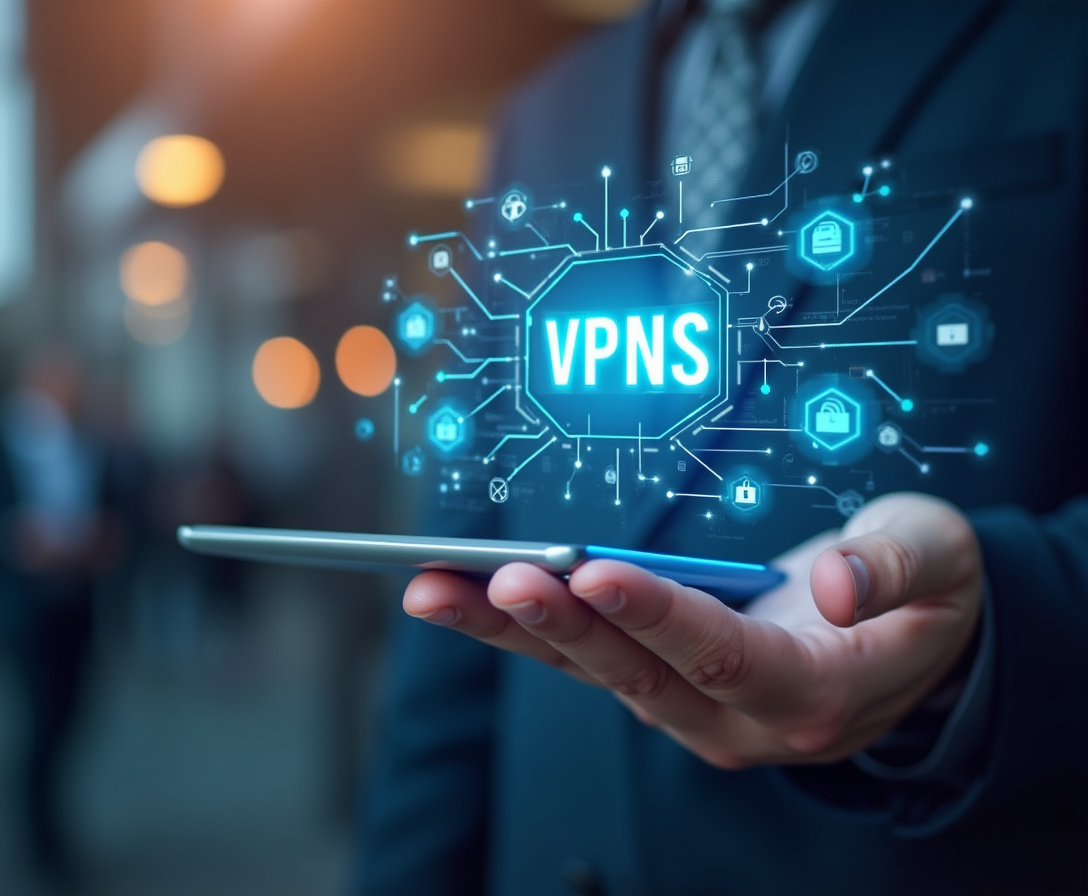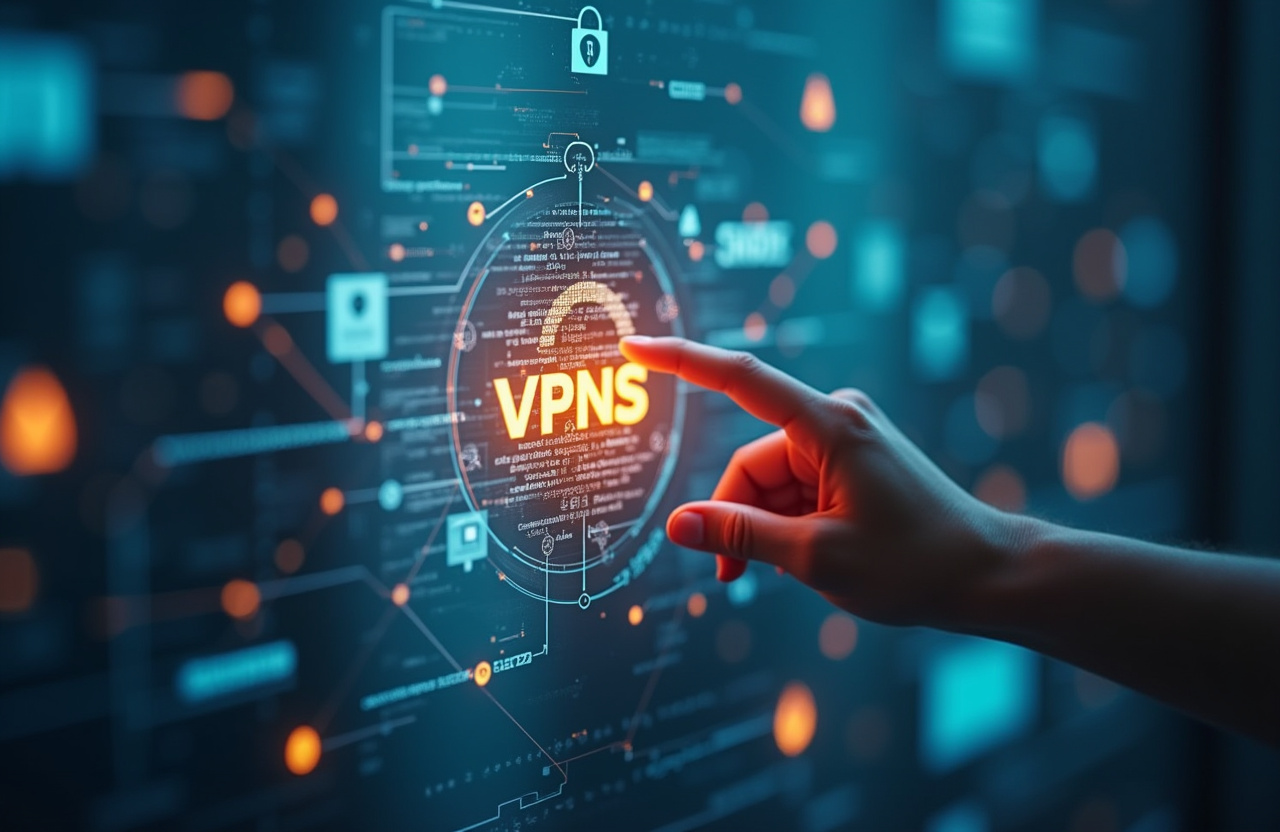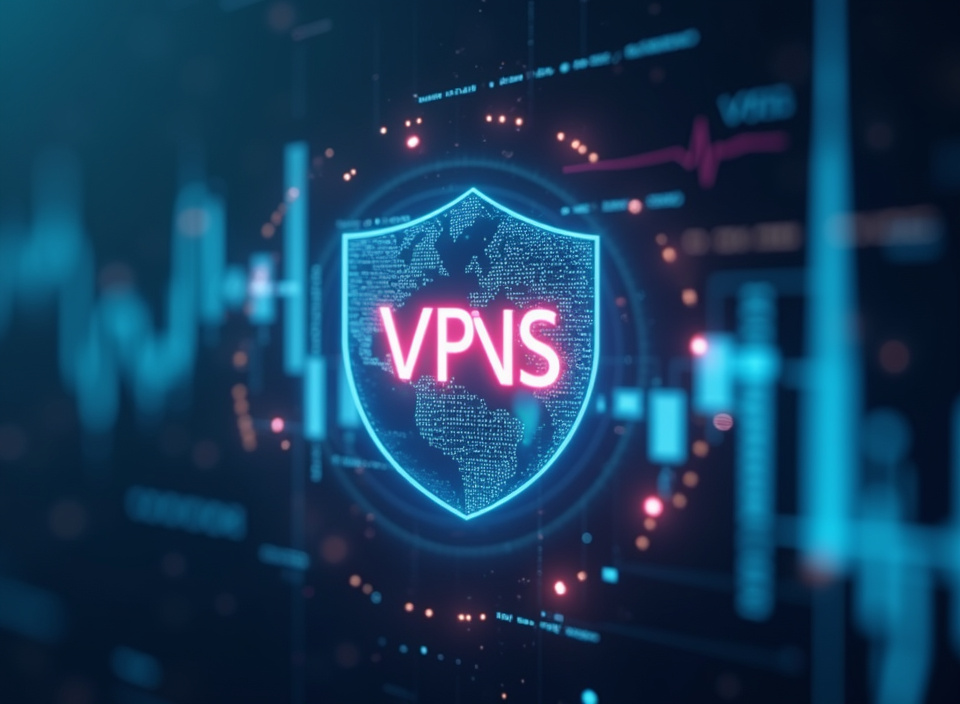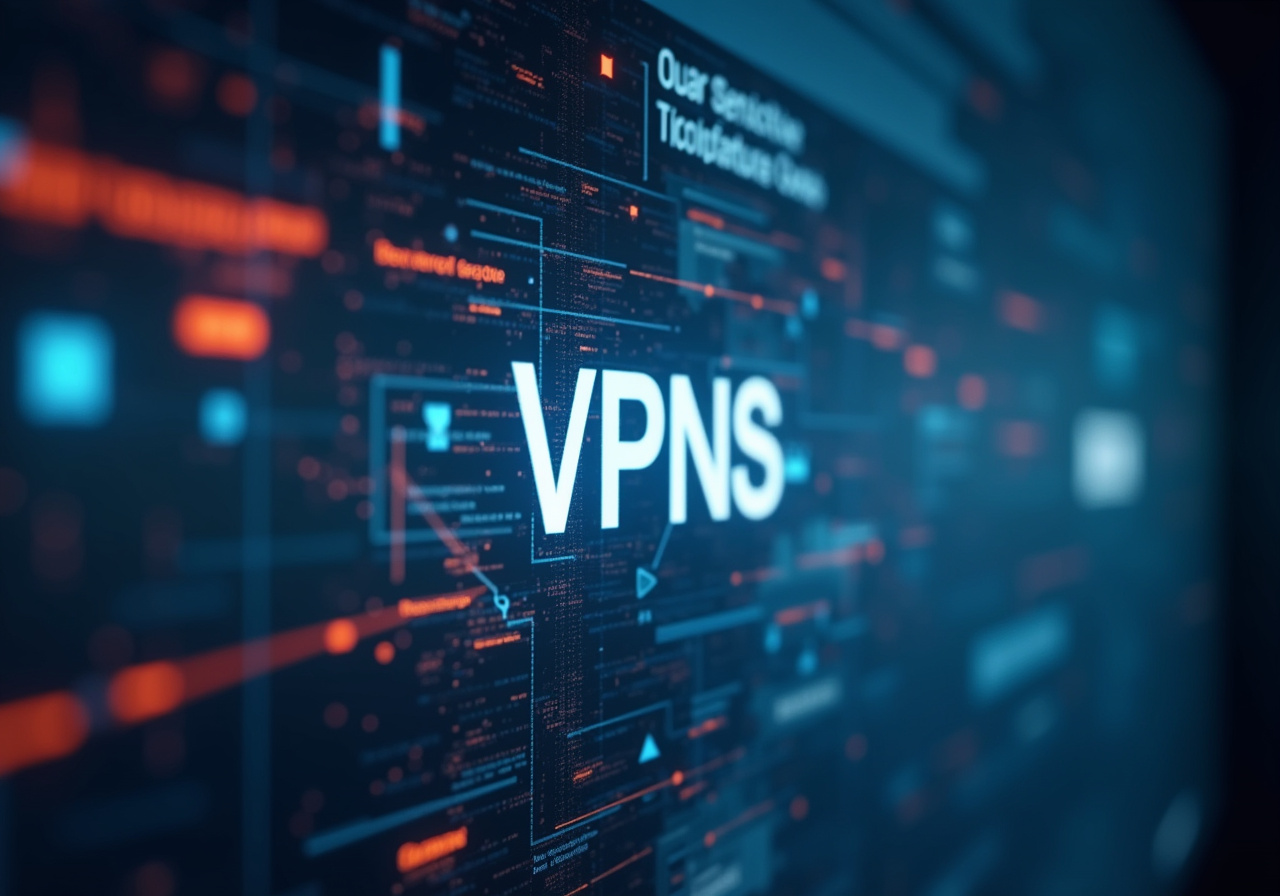VPNs for Emergency Response Teams: Protecting Communication
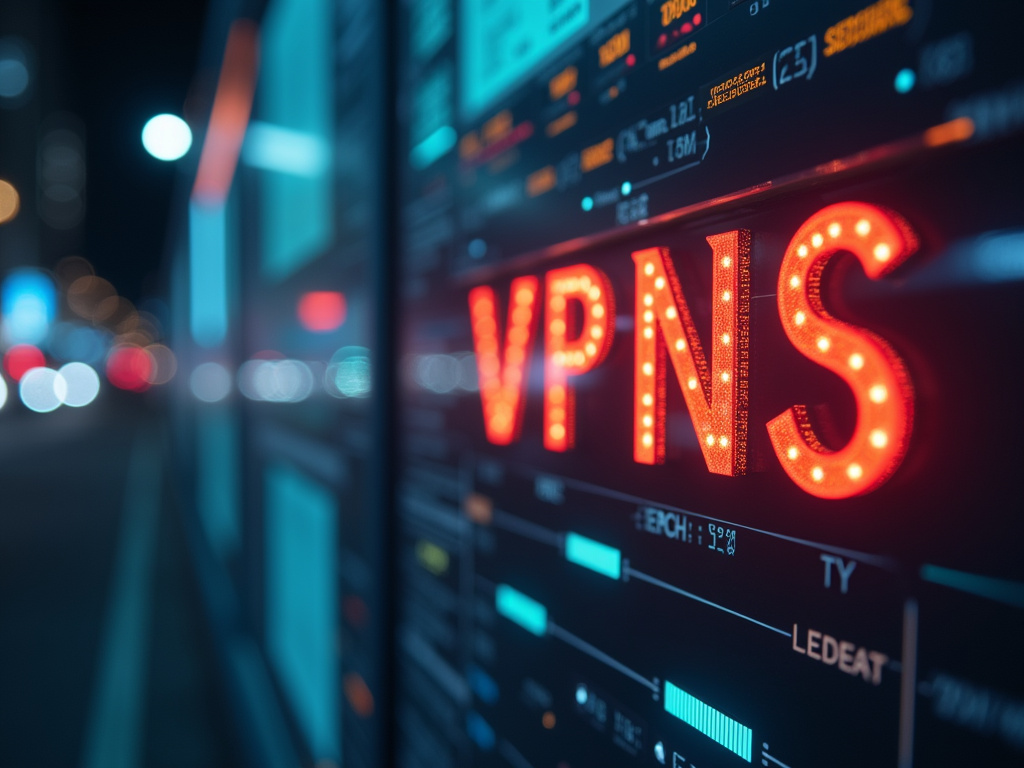
Table of Contents
Introduction to VPNs in Emergency Services
In the high-stakes, time-sensitive world of emergency response, seamless and secure communication is not merely a convenience—it's a lifeline. This article delves into the crucial role that Virtual Private Networks (VPNs) play in safeguarding communication for emergency response teams. We'll explore how these technologies offer a vital layer of information protection, ensuring the secure transfer of critical data and maintaining the integrity of communications during crises.
Emergency response teams, comprising paramedics, firefighters, law enforcement officers, and disaster relief personnel, rely on the rapid exchange of crucial information to effectively coordinate efforts, manage resources, and ultimately, save lives. From real-time updates on incident locations to sensitive patient data, the information shared must be secure and reliable. However, the very nature of their work often exposes them to vulnerable communication channels, susceptible to interception, disruption, and cyber threats.
Traditional communication methods, such as unencrypted radio frequencies and public Wi-Fi networks, present significant risks to communication security, potentially compromising sensitive information and hindering operational effectiveness. Imagine a scenario where ambulance routing directions are intercepted by malicious actors, or sensitive patient data is exposed through an insecure wireless connection. The consequences could be catastrophic, leading to delayed response times, compromised patient care, and even endangering the lives of first responders.
This is where a robust *emergency response VPN* comes into play, offering a vital layer of *information protection* and ensuring secure communication channels for first responders. An *emergency response VPN* provides a secure and encrypted tunnel for *data exchange* between team members, dispatch centers, and other relevant agencies. By creating a virtual private network (VPN), sensitive information is shielded from prying eyes, guaranteeing confidentiality and maintaining the integrity of critical data.
This is especially crucial when transmitting sensitive details like patient medical records, incident reports, and strategic operational plans. Without such a secure system, unauthorized parties could potentially access and misuse this information, leading to severe consequences. Furthermore, a carefully implemented VPN enhances *communication security* by authenticating users and devices, preventing unauthorized access to the network and safeguarding against potential cyberattacks.
Robust authentication protocols ensure that only authorized personnel can access sensitive data, reducing the risk of internal breaches and malicious intrusions. The vulnerabilities inherent in public Wi-Fi networks are particularly concerning for emergency response teams operating in disaster zones or remote areas. These networks are notorious for their lack of security, making them easy targets for hackers seeking to steal credentials or intercept sensitive data.
Using an *emergency response VPN* encrypts all data transmitted over these networks, rendering it unreadable to potential eavesdroppers. This added layer of *communication security* is vital in maintaining the confidentiality of sensitive information and ensuring that first responders can access and share information without fear of compromising data. Beyond public Wi-Fi, even seemingly secure networks can be vulnerable to sophisticated attacks.
A properly configured VPN acts as a constant guardian, protecting data regardless of the underlying network infrastructure. The implementation of an *emergency response VPN* requires a comprehensive understanding of the specific needs and challenges faced by these teams. Factors such as network infrastructure, device compatibility, and user training must be carefully considered.
A successful implementation requires a collaborative effort between IT professionals, emergency response personnel, and relevant stakeholders to ensure that the VPN is effectively integrated into existing workflows and communication protocols. This includes assessing the current communication infrastructure, identifying potential vulnerabilities, and developing a tailored VPN solution that meets the unique requirements of the organization. Adequate user training is essential to ensure that first responders understand how to use the VPN effectively and securely.
This training should cover topics such as connecting to the VPN, troubleshooting common issues, and adhering to security best practices. Regular security audits and penetration testing should also be conducted to identify and address potential vulnerabilities in the VPN infrastructure. The ongoing maintenance and monitoring of the VPN are equally crucial to ensure its continued effectiveness.
This includes regularly updating the VPN software, monitoring network traffic for suspicious activity, and responding promptly to security incidents. By implementing a proactive security approach, organizations can minimize the risk of data breaches and ensure the *communication security* of their emergency response teams. Ultimately, the adoption of an *emergency response VPN* is a critical investment in the safety and effectiveness of first responders.
By providing secure and reliable communication channels, VPNs empower these teams to respond more quickly, efficiently, and safely to emergencies, ultimately saving lives and protecting communities.
One of the primary benefits of utilizing an *emergency response VPN* lies in its ability to protect critical *information protection* and maintain *data exchange* integrity. Emergency response teams handle a vast amount of sensitive data, ranging from personal medical information to strategic operational plans, incident reports, and confidential communication logs. The exposure of this data can have severe repercussions, including privacy breaches, legal liabilities, and compromised operational effectiveness, potentially leading to misinformation during crucial operations.
Patient confidentiality, for instance, is paramount; unauthorized access to medical records could lead to identity theft, discrimination, and emotional distress for patients. Similarly, the exposure of strategic operational plans could allow adversaries to anticipate and undermine emergency response efforts, increasing the risk to both first responders and the public they serve. An *emergency response VPN* employs advanced encryption techniques to scramble data transmitted over the network, rendering it unreadable to unauthorized individuals.
This encryption, often utilizing protocols like AES (Advanced Encryption Standard), ensures that even if data is intercepted, it cannot be deciphered without the correct decryption key. This level of *information protection* is paramount in safeguarding sensitive information and maintaining the confidentiality of communications. The strength of the encryption algorithms used is a vital consideration.
Stronger encryption offers greater protection against brute-force attacks and other attempts to compromise the data. Beyond encryption, *emergency response VPNs* also offer robust authentication mechanisms to verify the identity of users and devices attempting to access the network. Multi-factor authentication, such as requiring a password and a one-time code sent to a mobile device, adds an extra layer of security, preventing unauthorized access even if credentials are compromised.
Biometric authentication, such as fingerprint or facial recognition, can further enhance security. By implementing strong authentication protocols, VPNs ensure that only authorized personnel can access sensitive information and participate in *data exchange*. This significantly reduces the risk of unauthorized access, whether from malicious insiders or external attackers.
Maintaining the integrity of data is also crucial in emergency response situations. Inaccurate or corrupted data can lead to flawed decisions, misallocation of resources, and potentially life-threatening consequences. Imagine incorrect GPS coordinates being transmitted to rescue personnel, leading them to the wrong location and delaying assistance to those in need.
*Emergency response VPNs* often incorporate data integrity checks to ensure that data transmitted over the network remains unaltered and accurate. These checks, such as checksums and hash functions, can detect and prevent data tampering, guaranteeing that the information received by team members is reliable and trustworthy. Consider a scenario where a first responder needs to access a map of the affected area during a disaster relief operation.
Using an *emergency response VPN* ensures that the map data is transmitted securely and accurately, allowing the first responder to make informed decisions and navigate effectively. In addition to protecting data in transit, *emergency response VPNs* can also enhance data security at rest. By integrating with secure storage solutions, VPNs can ensure that sensitive data stored on devices or servers is encrypted and protected from unauthorized access.
This added layer of security is vital in preventing data breaches in case of device theft or loss. Data exchange between different agencies and organizations is often necessary during emergency response operations. An *emergency response VPN* can facilitate secure data exchange by creating a trusted network that allows authorized entities to share information seamlessly while maintaining data security and integrity.
This requires establishing interoperability between different VPN systems and implementing secure protocols for *data exchange*. Regular audits and security assessments are necessary to ensure the continued effectiveness of the VPN and to identify and address any vulnerabilities. The investment in a robust *emergency response VPN* is an investment in the safety and security of both first responders and the communities they serve.
The application of a *VPN for first responders* extends beyond mere *data exchange* encryption; it significantly enhances their operational capabilities and overall effectiveness in critical situations. In times of crisis, first responders require rapid and reliable access to vital information, ranging from incident reports and maps to real-time weather updates and communication logs. A VPN can provide this access by creating a secure and stable connection to central databases and communication networks, regardless of the location of the responder.
This is particularly important when operating in areas with limited or unreliable network infrastructure, such as disaster zones or remote rural areas. The ability to maintain a secure connection, even in challenging environments, is a key advantage of using a *VPN for first responders*. Access to real-time data can significantly impact their ability to assess situations accurately and make informed decisions.
Imagine a firefighter responding to a building fire. With a VPN-enabled device, they can instantly access building blueprints, hazardous material information, and real-time updates from the incident commander, allowing them to make informed decisions and respond safely and effectively. The ability to access building blueprints can help them identify potential hazards and plan their attack strategy.
Information about hazardous materials can help them take appropriate precautions to protect themselves and the public. Real-time updates from the incident commander can keep them informed of changing conditions and ensure that they are coordinated with other team members. Without this secure and timely access to information, firefighters would be forced to rely on outdated or incomplete data, increasing the risk of injury or death.
In addition, VPNs can improve coordination and collaboration among first responders from different agencies and jurisdictions. By creating a secure and shared communication platform, a VPN enables seamless *data exchange* and communication between team members, regardless of their location or affiliation. This improved coordination can lead to faster response times, better resource allocation, and ultimately, more lives saved.
Interoperability is a crucial consideration in this context. The VPN solution should be compatible with the communication systems used by different agencies to ensure seamless communication across different organizations. Consider a multi-agency search and rescue operation.
With a VPN, team members from different agencies can share information, coordinate search patterns, and communicate effectively, improving the chances of finding missing persons and ensuring *communication security* for the safety of the rescue teams. They can share maps, photos, and other relevant information in real-time, allowing them to coordinate their efforts and avoid duplication of effort. They can also communicate with each other securely, ensuring that their conversations are private and protected from eavesdropping.
Furthermore, a VPN can enable first responders to access and utilize advanced technologies that can enhance their situational awareness and decision-making abilities. For example, VPN-enabled drones can provide real-time aerial imagery of disaster zones, allowing first responders to assess the situation, identify hazards, and direct resources effectively. Similarly, VPN-connected sensors can monitor environmental conditions, such as air quality and water levels, providing valuable information for assessing risks and planning responses.
These advanced technologies rely on secure and reliable *data exchange*, which is ensured by the VPN. Drones require a secure connection to transmit video and sensor data to the command center. Sensors require a secure connection to transmit environmental data to monitoring stations.
Without a VPN, these technologies would be vulnerable to hacking and data breaches, potentially compromising their effectiveness and safety. The deployment of a *VPN for first responders* requires careful planning and execution. Factors such as the size of the organization, the number of users, and the types of devices used should be considered when selecting a VPN solution.
The VPN should be easy to use and manage, and it should be compatible with the existing network infrastructure. Regular security audits and penetration testing should be conducted to ensure that the VPN is secure and effective. User training is essential to ensure that first responders understand how to use the VPN properly and securely.
By taking these steps, organizations can ensure that their *VPN for first responders* provides the *information protection* and *communication security* they need to respond effectively to emergencies.
Enhancing Security and Privacy for Subscription Services with VPNs
Beyond the immediate benefits during active emergency responses, implementing an *emergency response VPN* also provides long-term advantages in preparedness and resilience. The ability to securely collect, store, and analyze data related to incidents and responses can significantly improve future planning and resource allocation. Post-incident analysis, when conducted securely through the VPN, can reveal patterns, identify areas for improvement, and inform the development of more effective strategies.
For example, analyzing communication logs and incident reports can help identify bottlenecks in communication channels or deficiencies in resources, leading to targeted improvements in training and equipment. This continuous cycle of learning and improvement is crucial for enhancing the overall preparedness of emergency response teams. Moreover, the *information protection* afforded by a VPN is essential for maintaining public trust and confidence.
When citizens know that their personal information is being handled securely and responsibly, they are more likely to cooperate with emergency responders and provide valuable information that can aid in response efforts. This trust is a critical asset during crises, as it fosters collaboration and facilitates the flow of information between the public and emergency services. Maintaining this trust requires demonstrable commitment to *communication security* and *data exchange* integrity.
The use of a VPN can also facilitate remote training and simulations, allowing first responders to practice their skills and test their response plans in a secure and realistic environment. These simulations can be conducted remotely, reducing the need for expensive and time-consuming in-person training sessions. The ability to securely access training materials and participate in simulations from remote locations is particularly valuable for volunteer first responders or those who are geographically dispersed.
The *VPN for first responders* ensures the confidentiality of training scenarios and the secure *data exchange* of performance data. Furthermore, a well-designed VPN can enhance the resilience of emergency response systems by providing redundancy and failover capabilities. In the event of a network outage or cyberattack, the VPN can automatically reroute traffic through alternative channels, ensuring that communication and *data exchange* remain uninterrupted.
This redundancy is crucial for maintaining operational continuity during critical incidents when every second counts. The ability to quickly and seamlessly switch between different network connections can make the difference between a successful response and a catastrophic failure. The selection and implementation of an *emergency response VPN* should be guided by a comprehensive risk assessment that identifies potential threats and vulnerabilities.
This assessment should consider factors such as the sensitivity of the data being transmitted, the types of devices being used, and the potential for cyberattacks or network outages. Based on the results of the risk assessment, organizations can select a VPN solution that provides the appropriate level of security and resilience. The *emergency response VPN* solution should also be scalable to accommodate future growth and changing needs.
As the organization expands or adopts new technologies, the VPN should be able to adapt and continue to provide secure and reliable communication. This scalability is essential for ensuring that the VPN remains a valuable asset over the long term. *Communication security* protocols should be chosen and updated regularly to ensure they are up-to-date with the most current countermeasures to cyber threats.
Regular penetration testing and vulnerability assessments also serve to mitigate risks. Continuous monitoring of the *VPN for first responders*, proper staff training, and risk assessment are all essential for ensuring the long-term viability and success of the system. The *VPN for first responders* is not simply a piece of technology; it is an integral part of a comprehensive emergency preparedness strategy.
By providing secure and reliable *communication security* and *data exchange*, VPNs empower first responders to better protect themselves and the communities they serve.
The Future of VPNs in Subscription Services
In conclusion, the strategic deployment of a robust *emergency response VPN* is not merely a technological upgrade but a fundamental necessity for modern emergency response teams. From paramedics on the scene of an accident to firefighters battling a blaze and disaster relief personnel coordinating aid, the ability to communicate securely and reliably is paramount to effective operations and the preservation of life. The risks associated with unencrypted communication channels and vulnerable public networks are simply too great to ignore, especially given the sensitivity of the *information protection * involved and the criticality of timely *data exchange*.
The implementation of a VPN provides a multi-layered security approach, encompassing encryption, authentication, and data integrity checks, creating a secure environment for *communication security* in even the most challenging circumstances. Looking forward, the integration of emerging technologies will likely further enhance the capabilities and benefits of VPNs for first responders. For instance, the increasing use of IoT (Internet of Things) devices, such as wearable sensors and smart vehicle systems, will generate a vast amount of data that needs to be transmitted securely.
VPNs will play a crucial role in securing this *data exchange*, enabling real-time monitoring of responder health and safety, as well as providing valuable insights into environmental conditions and incident dynamics. Similarly, the adoption of 5G networks promises to deliver faster and more reliable connectivity for first responders. However, the increased bandwidth and complexity of 5G also introduce new security challenges.
VPNs will be essential for mitigating these risks, ensuring that the benefits of 5G are realized without compromising *information protection* or *communication security*. Furthermore, future *emergency response VPN* solutions may incorporate advanced features such as artificial intelligence (AI) and machine learning (ML) to proactively identify and mitigate security threats. AI-powered security systems can analyze network traffic patterns, detect anomalies, and automatically respond to potential attacks in real-time.
This proactive approach to security can significantly enhance the resilience of emergency response systems and reduce the risk of data breaches. Moreover, the development of more user-friendly and intuitive VPN interfaces will be crucial for ensuring widespread adoption among first responders. The VPN should be easy to use and manage, even in stressful and time-sensitive situations.
Simplicity and reliability should be prioritized to minimize the cognitive burden on first responders and allow them to focus on their primary mission. Training and ongoing support programs must address not only the 'how' of VPN usage, but also the 'why,' so that adoption and best *communication security* practices trickle down across the organization. Ultimately, the success of an *emergency response VPN* depends on a holistic approach that encompasses technology, policy, and training.
Organizations must invest in robust VPN solutions, develop clear security policies, and provide ongoing training to first responders to ensure that they are equipped to use the VPN effectively and securely. The *VPN for first responders* is a vital tool for ensuring that these individuals are able to perform their duties safely and effectively, protecting themselves and the communities they serve. By embracing this technology and prioritizing *communication security*, we can empower first responders to save lives, protect property, and build more resilient communities.
The ongoing evaluation, and refinement of VPN deployments for emergency response teams should be a permanent item on the agenda of safety and disaster response groups, as well as the technology committees that support them. In closing, the *emergency response VPN* is absolutely indispensable for modern emergency response teams; it is more than just a technical solution but something that is fundamental to their operations.
Stay Updated
Get the latest VPN news, tips, and exclusive deals to your inbox.
